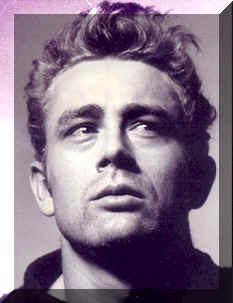Stars of India: The Bling-Bling in the Crown
By John LancasterWashington Post Foreign ServiceSunday, February 6, 2005; Page D01
NEW DELHI -- They wear silk saris, well-cut Nehru jackets and incandescent smiles. They are practiced in the art of air-kissing and social banter. They are often beautiful, usually rich and sometimes genuinely talented. They are India's new elite. They are India's "Page 3 people."
Named after the place where their parties and polo matches are breathlessly chronicled in the lifestyle sections of the English-language press, the Page 3 crowd is a broad category that mixes traditional celebrities -- Bollywood stars, cricket players, literary figures -- with new-money admen, fashion designers, high-tech entrepreneurs and other beneficiaries of India's growing integration with the global economy.
Celebrity coverage is a relatively recent addition to Indian newspapers that traditionally have tended toward stodgy government news. But it has proven to be a big hit with readers, reflecting the soaring aspirations and rapid expansion of the middle class.
India has long revered larger-than-life figures such as Jawaharlal Nehru, left, and Mahatma Gandhi. Now papers such as the Times of India, below, breathlessly cover the rich and famous on Page 3. (Max Desfor -- AP)
Today's Headlines & ColumnistsSee a Sample Sign Up Now
Breaking News AlertsSee a Sample Sign Up Now
It also has provided grist for a popular new movie, "Page 3." The film spotlights the sometimes-jarring emergence of Western-style celebrity culture in this conservative nation of more than a billion people, many of whom remain desperately poor.
The plot centers on Madhavi Sharma, a conscientious cub reporter who covers the Page 3 scene for a newspaper in Bombay. Initially bewitched by her glamorous subjects, Madhavi comes to see them as cynics and hypocrites, such as the wealthy businessman who turns out to be a pedophile or the society maven who seeks out the television cameras at a friend's funeral to promote her new line of herbal cosmetics.
The movie mocks the social ambitions and crass commercial motives of those who'll do anything to get their pictures on Page 3. There's the cloddish, client-hungry businessman, recently returned from abroad, who hires an event-management firm to throw him a "Page 3 party" and by the end of the movie has become a bigger snob than any of his guests.
Though well received by critics and audiences, the film by director Madhur Bhandarkar has triggered a defensive reaction among some denizens of Page 3, who accuse him of taking cheap shots.
"Page 3 people are certainly not artificial," Kalyani Chawla, an art promoter, told the Hindustan Times, which sells more than 700,000 papers daily in Delhi, last week. "They are busy, successful and good-looking people. I run three businesses, am a single mother, work hard and have a right to socialize."
Rajiv Desai, a public relations consultant who lived for many years in Chicago, sees in the phenomenon a healthy democratization of the Indian elite. "I celebrate the Page 3 culture because it's a thing based on achievement," he said while attending a Page 3 function at New Delhi's Oberoi Hotel recently.
Bhandarkar insisted that his movie was not meant to offend. "I'm not making a judgment," he said by telephone from Bombay, describing the movie as "a documentary, realistic portrayal." He added, "I myself am on Page 3 so many times. . . . They are not creepy people."
Celebrity is not a new phenomenon in post-colonial India, where the public has long been infatuated with Bollywood stars and larger-than-life political figures such as Jawaharlal Nehru, the country's first prime minister, and his daughter, Prime Minister Indira Gandhi, who was assassinated by her Sikh bodyguards in 1984.
But this is also the country of Mahatma Gandhi, who dressed in robes of homespun cotton and eschewed all but the most basic necessities, a country that often teetered on the brink of famine in its first decades of existence and a country whose government pursued a socialist model that discouraged conspicuous consumption.
Although much has changed in recent years, coverage of celebrities is still relatively tame by the standards of American or British media, in part because celebrities enjoy greater privacy protections under Indian law; in December, for example, India's supreme court opined that the airing of a camera-phone video purportedly showing two Bollywood stars locked in a steamy kiss -- something that would hardly have raised an eyebrow in the West -- "cannot be in the public good."
"We are way behind other countries when it comes to paparazzi," said Kanika Gahlaut, a former Page 3 reporter who now writes for India Today, the country's leading newsmagazine. "You can't write about a chief minister's girlfriend."
On the other hand, she said, it is permissible to "talk about his clothes," and that in itself is something of a breakthrough. Media analysts trace the shift to the mid-1990s, when major English-language dailies such as the Times of India -- with a daily circulation close to 600,000 in Bombay -- came under growing competitive pressure from new private television stations.
CONTINUED 1 2 Next >
© 2005 The Washington Post Company
Sunday, May 07, 2006
Tuesday, February 28, 2006
Subscribe to:
Comments (Atom)


